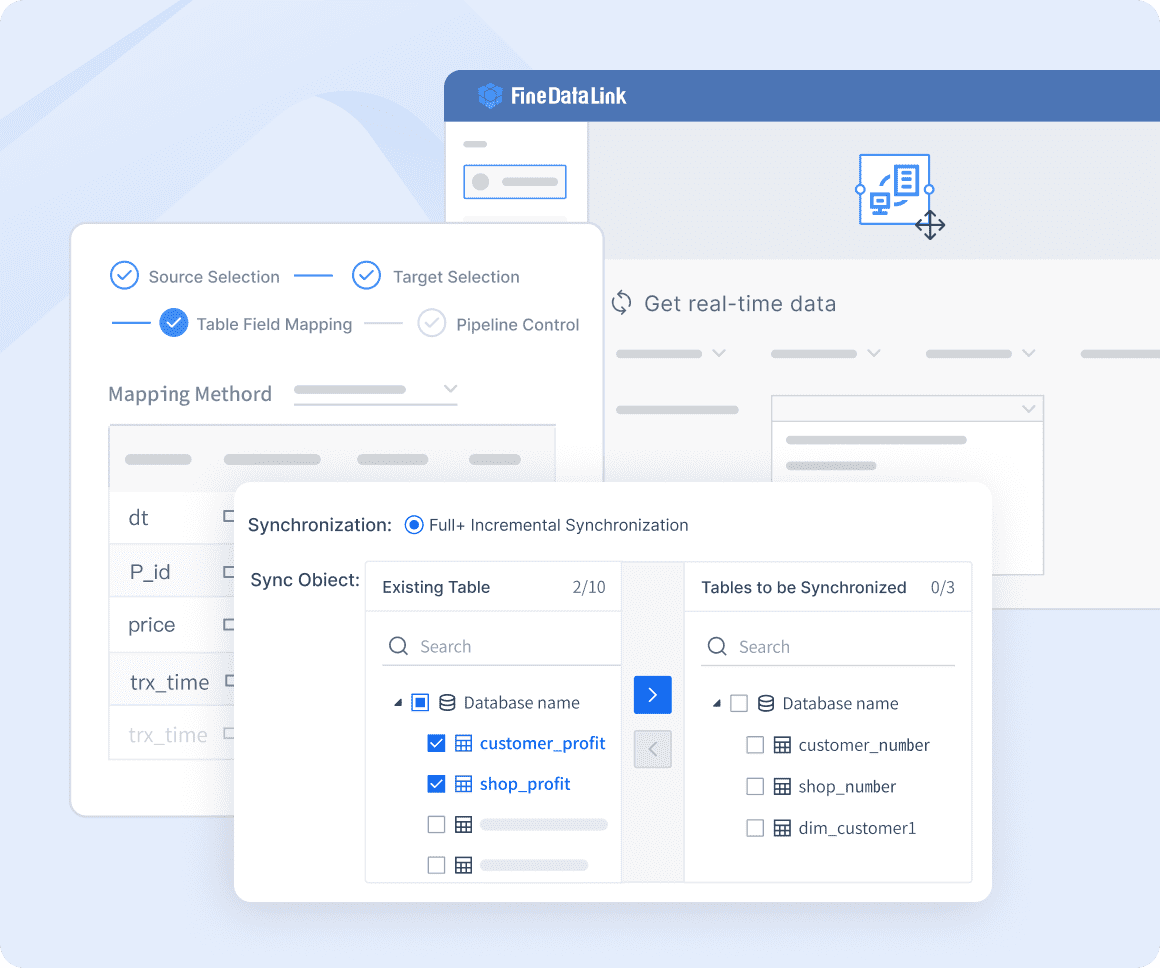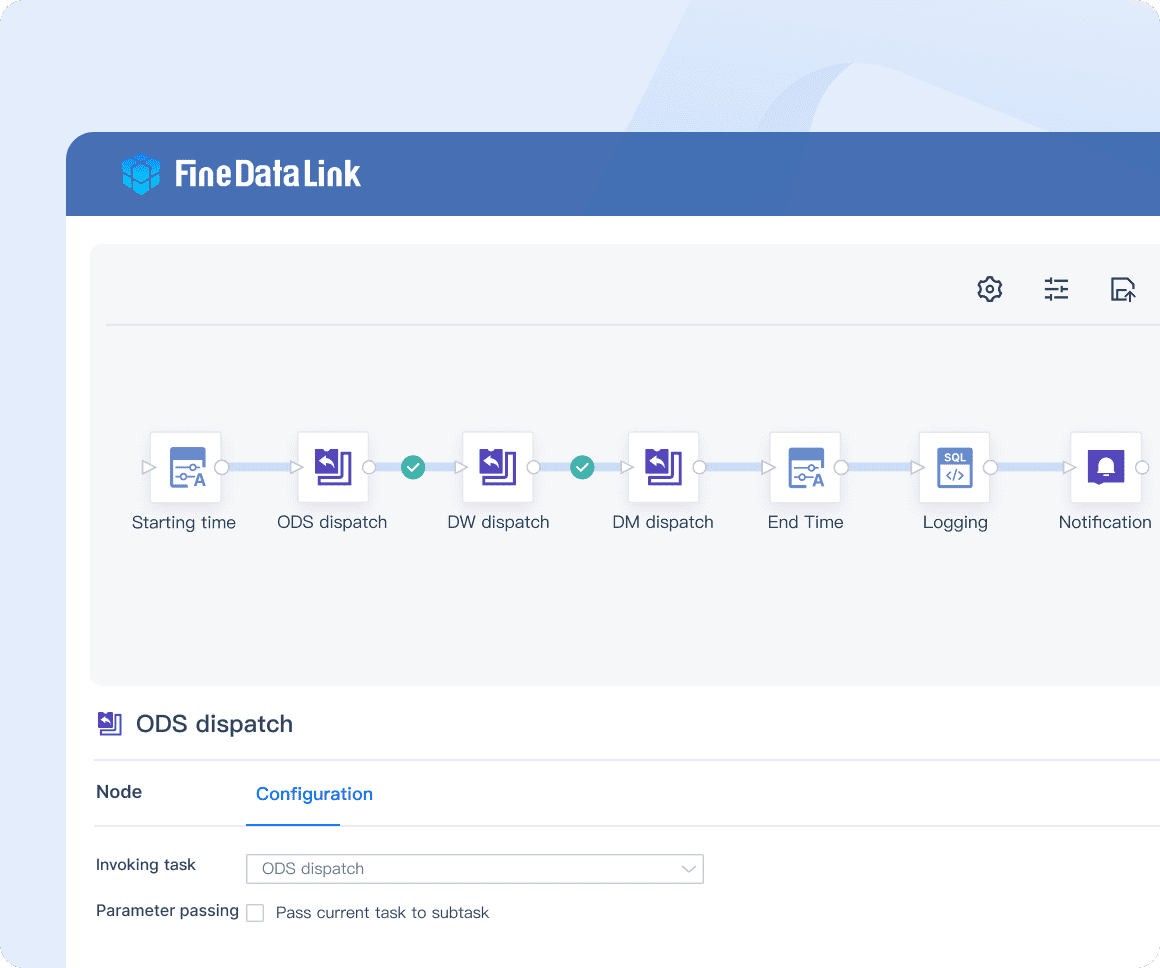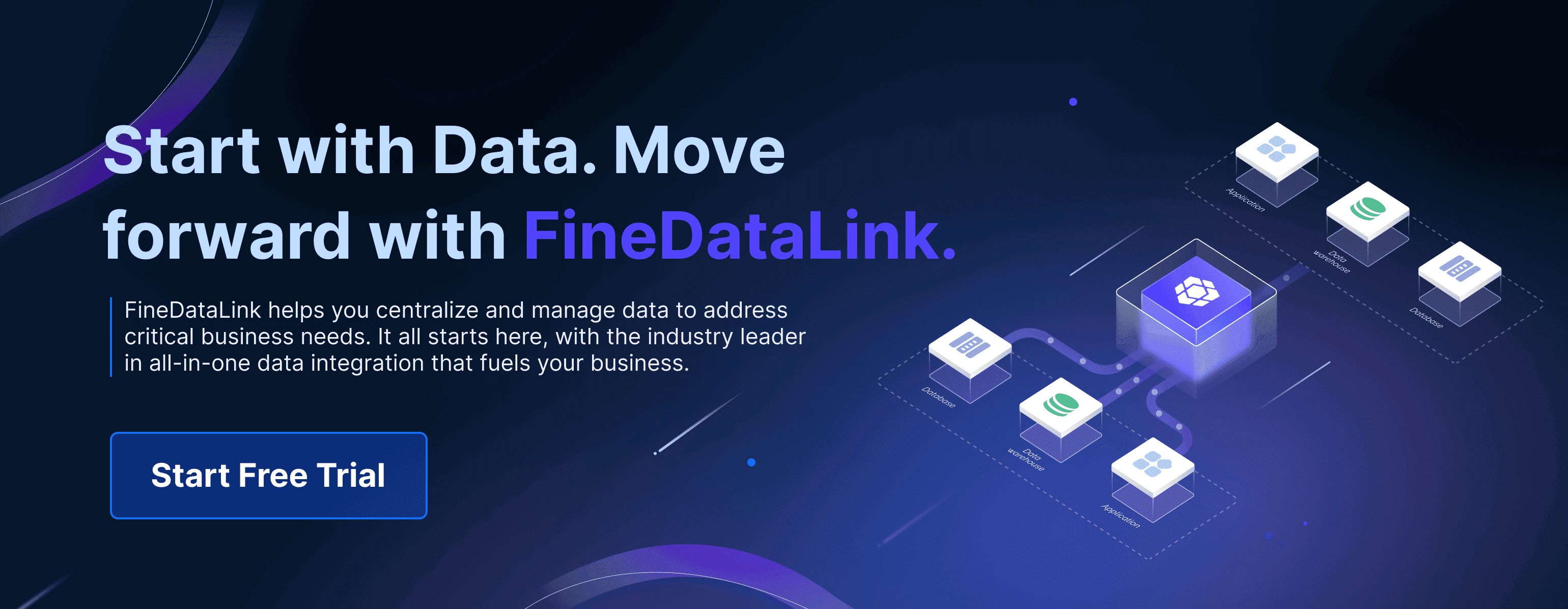

Data operations, often referred to as DataOps, play a crucial role in modern organizations. They ensure that you have access to high-quality data, which is essential for making informed decisions. By implementing data operations, you can experience faster and more efficient collaboration across teams. This leads to more predictable, consistent, and reliable data delivery. Tools like FineDataLink, FineReport, and FineBI enhance these processes by providing seamless data integration and insightful analytics. As a result, your organization can gain a competitive advantage through improved data-driven decision-making.
Understanding Data Operations

Definition and Scope of Data Operations
What constitutes data operations?
Data operations, or DataOps, encompass a set of practices and processes that aim to improve the quality, speed, and reliability of data management. You can think of DataOps as a framework that integrates data engineering, data integration, and data quality management. It ensures that your organization can efficiently handle data from various sources, transforming it into valuable insights. By implementing DataOps, you can streamline data workflows, automate repetitive tasks, and enhance collaboration among data teams.
Key components of data operations
Data operations consist of several key components that work together to optimize data management. These include:
- Data Integration: Combining data from different sources to provide a unified view.
- Data Quality Management: Ensuring data accuracy, consistency, and reliability.
- Data Governance: Establishing policies and procedures for data usage and security.
- Data Automation: Automating data processing tasks to increase efficiency.
- Collaboration Tools: Facilitating communication and cooperation among data teams.
By focusing on these components, you can create a robust data operations strategy that supports your organization's goals.
Historical Context of Data Operations
Evolution of data operations
Data operations have evolved significantly over the years. Initially, organizations relied on centralized, monolithic models for data management. However, as data volume, velocity, and variety increased, this approach became less effective. Today, many organizations have adopted a distributed model, often referred to as a data mesh. This model allows for federated insights creation, enabling you to manage data more effectively across different departments and teams.
Impact of technological advancements
Technological advancements have played a crucial role in shaping data operations. The rise of modern cloud-based platforms has made it easier for organizations to manage large volumes of data. By applying agile principles, you can quickly adapt to changing data needs and ensure that your data operations remain efficient and effective. Additionally, the integration of DataOps with DevOps and data science practices has become critical to digital transformation. This integration optimizes data lifecycle management, driving greater value from analytics and making information more actionable and accessible.
Core Components of Data Operations
Data Management
Data Storage and Retrieval
Data management begins with effective data storage and retrieval. You need to ensure that your data is stored securely and can be accessed quickly when needed. Modern data operations utilize advanced storage solutions, such as cloud-based platforms, to handle large volumes of data efficiently. These platforms offer scalability, allowing you to expand your storage capacity as your data grows. By implementing robust retrieval systems, you can access your data swiftly, which is crucial for timely decision-making.
Data Governance and Compliance
Data governance involves establishing policies and procedures to manage your data's integrity, security, and usability. You must ensure that your data complies with relevant regulations and standards. This includes implementing data privacy measures and maintaining accurate records of data usage. Effective data governance helps you build trust with stakeholders by demonstrating your commitment to data protection and compliance.
Data Processing
Data Cleaning and Transformation
Data processing involves cleaning and transforming raw data into a usable format. You need to remove inaccuracies and inconsistencies to ensure data quality. Tools like data cleansing and transformation software automate these tasks, saving you time and reducing errors. By transforming data into a standardized format, you can integrate it seamlessly with other datasets, enhancing its value for analysis.
Data Integration and Aggregation
Data integration combines data from various sources to provide a comprehensive view. You can use data integration tools to automate this process, ensuring that your data is consistent and up-to-date. Aggregation involves summarizing data to extract meaningful insights. By integrating and aggregating data, you can create a unified dataset that supports informed decision-making.
Data Analysis
Techniques and Tools
Data analysis involves using techniques and tools to extract insights from your data. You can employ various methods, such as statistical analysis, machine learning, and data mining, to uncover patterns and trends. Tools like FineBI and FineReport facilitate data visualization, making it easier for you to interpret complex data sets. By leveraging these techniques and tools, you can transform raw data into actionable insights.
Role of Data Analytics in Decision-Making
Data analytics plays a crucial role in decision-making by providing you with data-driven insights. By analyzing data, you can identify opportunities, assess risks, and make informed decisions that align with your organization's goals. Data analytics enables you to predict future trends and outcomes, allowing you to plan strategically and stay ahead of the competition.
Implementing Data Operations
Strategies for Effective Implementation
To implement data operations effectively, you need to adopt certain strategies that ensure success. Here are some best practices to consider:
Best Practices
- Foster Collaboration: Encourage collaboration between IT operations and data-processing teams. This synergy enhances the value derived from analytics, making information more actionable and accessible.
- Automate Processes: Implement automated processes to streamline data management. Automation reduces manual errors and increases efficiency, allowing you to focus on strategic tasks.
- Continuous Improvement: Cultivate a culture of continuous improvement. Regularly assess and optimize your data operations to adapt to changing needs and technologies.
- End-to-End Management: Oversee the entire data pipeline, from initial data collection to ongoing monitoring. This holistic approach ensures data quality and reliability throughout the process.
Common Challenges and Solutions
Implementing data operations can present challenges. Here are some common issues and their solutions:
- Data Silos: Data stored in separate systems can hinder integration. Use data integration tools to break down these silos and create a unified data view.
- Complex Data Formats: Diverse data formats require manual transformation. Employ data transformation tools to automate this process and ensure consistency.
- Scalability Issues: Handling large data volumes can strain resources. Opt for scalable cloud-based platforms to manage data growth efficiently.
Tools and Technologies for Data Operations
Selecting the right tools and technologies is crucial for successful data operations. Here are some popular options:
Popular Data Operations Tools
- FineDataLink: This platform simplifies complex data integration tasks with its low-code approach. It supports real-time data synchronization and advanced ETL & ELT capabilities.
- Tableau: Known for its data visualization capabilities, Tableau helps you interpret complex datasets through interactive dashboards.
- Power BI: This tool offers robust data analytics and visualization features, enabling you to extract actionable insights from your data.
Emerging Technologies in Data Operations
Stay ahead by exploring emerging technologies that enhance data operations:
- Artificial Intelligence (AI): AI-driven tools automate data processing and analysis, providing faster and more accurate insights.
- Machine Learning (ML): ML algorithms identify patterns and trends in data, enabling predictive analytics and informed decision-making.
- Cloud-Based Platforms: These platforms offer scalability and flexibility, allowing you to manage large data volumes efficiently.
By implementing these strategies and leveraging the right tools, you can optimize your data operations and drive greater value from your data.
Key Benefits of Data Operations
Improved Data Quality
Data operations significantly enhance the quality of your data. You achieve greater accuracy and reliability by implementing robust data management practices. This ensures that the information you rely on is precise and dependable. When you have accurate data, you can make decisions with confidence, knowing that your insights are based on solid foundations.
Accuracy and Reliability
DataOps practices help you maintain high standards of data accuracy. By automating data validation processes, you reduce errors and inconsistencies. This automation ensures that your data remains reliable, which is crucial for analytics and reporting. When your data is accurate, you build trust in your data-driven decisions.
Consistency and Completeness
Consistency and completeness are vital aspects of data quality. Data operations provide tools and frameworks to ensure that your data is consistent across various sources. You can integrate data seamlessly, eliminating discrepancies and gaps. This consistency allows you to create comprehensive datasets that support thorough analysis and informed decision-making.
Enhanced Decision-Making
Data operations empower you to make better decisions by providing data-driven insights. With access to high-quality data, you can analyze trends and patterns more effectively. This leads to more informed choices that align with your strategic goals.
Data-Driven Insights
By leveraging data analytics, you gain valuable insights into your business operations. DataOps enables you to process and analyze data efficiently, uncovering hidden patterns and trends. These insights help you identify opportunities and mitigate risks, ultimately driving your organization forward.
Predictive Analytics
Predictive analytics is a powerful tool that data operations make accessible. By analyzing historical data, you can forecast future trends and outcomes. This foresight allows you to plan strategically and stay ahead of the competition. DataOps streamlines the predictive analytics process, making it easier for you to harness the power of data for future planning.
Increased Efficiency
Implementing data operations leads to increased efficiency in your organization. You streamline processes and reduce costs, allowing you to allocate resources more effectively.
Streamlined Processes
DataOps automates many data management tasks, reducing the need for manual intervention. This automation streamlines your processes, saving you time and effort. By eliminating repetitive tasks, you can focus on more strategic activities that drive growth and innovation.
Cost Savings
Efficiency translates into cost savings. By optimizing your data operations, you reduce the resources required for data management. This optimization leads to lower operational costs, allowing you to invest in other areas of your business. DataOps ensures that you achieve these savings without compromising on data quality or reliability.
FanRuan's Role in Data Operations
FanRuan plays a pivotal role in transforming data operations for businesses worldwide. By leveraging its innovative solutions, you can enhance your data management processes and drive strategic growth. Let's explore how FanRuan's offerings, particularly FineDataLink, contribute to effective data operations.
FineDataLink's Contribution
FineDataLink stands out as a comprehensive data integration platform. It simplifies complex data tasks, making it an invaluable tool for your organization.

Real-time Data Synchronization
With FineDataLink, you achieve real-time data synchronization. This feature ensures that your data remains up-to-date across all systems. You can access the latest information instantly, which is crucial for timely decision-making. Real-time synchronization eliminates data silos, providing a unified view of your data landscape.

Advanced ETL & ELT Capabilities
FineDataLink offers advanced ETL (Extract, Transform, Load) and ELT (Extract, Load, Transform) capabilities. These processes automate data transformation, ensuring consistency and accuracy. You can efficiently integrate data from various sources, enhancing its value for analysis. This automation reduces manual effort, allowing you to focus on strategic initiatives.
Case Studies and Examples of Data Operations
FanRuan's impact on data operations is evident through numerous successful implementations. By examining these cases, you can gain insights into best practices and lessons learned.
Successful Implementations
FanRuan collaborates with companies across industries to lead smart manufacturing and digital transformation. These partnerships showcase the effectiveness of its solutions. For instance, organizations have successfully integrated FineDataLink to streamline their data workflows. This integration has resulted in improved data quality and operational efficiency.
Lessons Learned
From these implementations, several lessons emerge. First, adopting a unified analytics platform like FineDataLink enhances data accessibility. Second, real-time synchronization and advanced ETL/ELT capabilities are critical for maintaining data integrity. Lastly, continuous collaboration with technology partners like FanRuan accelerates digital transformation.
By understanding FanRuan's role and leveraging its solutions, you can optimize your data operations. This optimization leads to better decision-making and a competitive edge in your industry.
Future Trends in Data Operations

Emerging Technologies of Data Operations
AI and Machine Learning
Artificial Intelligence (AI) and Machine Learning (ML) are revolutionizing data operations. You can use AI to automate data processing tasks, which increases speed and accuracy. Machine learning algorithms help you identify patterns and trends in your data. This capability allows you to make predictions and informed decisions. By integrating AI and ML into your data operations, you enhance efficiency and gain deeper insights.
Big Data and IoT
Big Data and the Internet of Things (IoT) are transforming how you manage and analyze data. Big Data technologies enable you to handle vast amounts of information from various sources. IoT devices generate real-time data, providing you with up-to-date insights. By leveraging these technologies, you can improve decision-making and optimize operations. The combination of Big Data and IoT offers you a comprehensive view of your business environment.
Evolving Practices of Data Operations
Data Privacy and Security
Data privacy and security have become critical concerns in data operations. You must ensure that your data complies with regulations and is protected from unauthorized access. Implementing robust security measures helps you safeguard sensitive information. By prioritizing data privacy, you build trust with your stakeholders and maintain compliance with legal standards.
Continuous Improvement and Innovation
Continuous improvement and innovation drive the evolution of data operations. You should regularly assess your data processes to identify areas for enhancement. By fostering a culture of innovation, you encourage your team to explore new technologies and methodologies. This approach helps you stay competitive and adapt to changing business needs. Embracing continuous improvement ensures that your data operations remain effective and efficient.
Key Insight: DataOps emphasizes collaboration across business and data teams, fostering open communication and breaking down silos. This approach enhances efficiency and supports timely access to relevant data, enabling better decision-making.
By staying informed about these future trends, you can optimize your data operations and position your organization for success.
Conclusion of Data Operations
Recap of Key Points
Summary of Data Operations
Data operations, or DataOps, have become essential in today's data-driven world. They encompass a set of practices that enhance the quality, speed, and reliability of data management. By integrating data engineering, data integration, and data quality management, you can efficiently handle data from various sources. This approach ensures that your organization can transform raw data into valuable insights, streamlining workflows and automating repetitive tasks.
Overview of Key Benefits
The benefits of implementing data operations are substantial. You achieve improved data quality, which ensures accuracy and reliability. Enhanced decision-making becomes possible through data-driven insights and predictive analytics. Additionally, increased efficiency results from streamlined processes and cost savings. By adopting data operations, you position your organization to gain a competitive edge through better data management and strategic growth.
Call to Action
Encouragement to Implement Data Operations
You should consider implementing data operations to unlock the full potential of your data. By doing so, you foster collaboration between IT operations and data-processing teams, driving greater value from analytics. This collaboration makes information more actionable and accessible, breaking down silos between data producers and consumers. Treating data as a product emphasizes stakeholder involvement, aligning key performance indicators (KPIs) and developing service level agreements (SLAs) for critical data.
Final Thoughts on the Future of Data Operations
The future of data operations looks promising. As data volume, velocity, and variety continue to grow, transitioning to a distributed model for insights and analytics becomes crucial. Emerging technologies like AI, machine learning, big data, and IoT will further enhance data operations. By staying informed about these trends and continuously improving your data processes, you ensure that your organization remains competitive and well-prepared for the challenges ahead. Embrace data operations today to secure a successful tomorrow.
Data operations hold immense importance in today's data-driven world. They empower you to harness the full potential of your data, ensuring accuracy and reliability. By adopting data operations, you unlock several key benefits:
- Enhanced Decision-Making: You gain data-driven insights that lead to better strategic decisions. According to BARC research, 69% of organizations reported improved strategic decisions through effective data management.
- Operational Efficiency: Streamlined processes reduce costs and improve control over operations, as noted by 54% of organizations.
- Customer Understanding: You achieve a deeper understanding of your customers, with 52% of organizations experiencing this benefit.
Embrace data operations to transform your organization's data into a powerful asset, driving growth and innovation.
FAQ
DataOps, short for data operations, refers to a set of practices and processes that aim to improve the quality, speed, and reliability of data management. It integrates data engineering, data integration, and data quality management to ensure efficient data handling from various sources.
DataOps is crucial because it enhances data quality and reliability. It allows you to make informed decisions based on accurate data. By streamlining workflows and automating repetitive tasks, DataOps improves efficiency and collaboration among data teams.
Traditional data management often involves manual processes and siloed data systems. DataOps, on the other hand, emphasizes automation, collaboration, and integration. It breaks down data silos and ensures a unified view of data across your organization.
DataOps consists of several key components:
Data Integration: Combines data from different sources.
Data Quality Management: Ensures data accuracy and consistency.
Data Governance: Establishes policies for data usage and security.
Data Automation: Automates data processing tasks.
Collaboration Tools: Facilitates communication among data teams.
To implement DataOps, you should:
Foster Collaboration: Encourage teamwork between IT and data-processing teams.
Automate Processes: Use tools to automate data management tasks.
Adopt Best Practices: Follow industry standards for data operations.
Continuously Improve: Regularly assess and optimize your data processes.
Common challenges include:
Data Silos: Use integration tools to unify data.
Complex Data Formats: Employ transformation tools for consistency.
Scalability Issues: Opt for scalable cloud-based platforms.
DataOps provides data-driven insights by ensuring high-quality data. It enables predictive analytics, allowing you to forecast trends and make strategic decisions. By leveraging data analytics, you can identify opportunities and mitigate risks effectively.
Technology plays a significant role in DataOps. Tools like FineDataLink simplify data integration, while platforms like FineBI and FineReport facilitate data visualization. Emerging technologies such as AI and machine learning further enhance data processing and analysis.
To excel as a Data Operations Analyst, focus on developing skills in data management, integration, and analytics. Prepare for interviews by understanding the types of questions asked and the role expectations. Insightful questions during interviews can demonstrate your knowledge and interest in the field.
Continue Reading About Data Operations
10 Game-Changing Project Management Reporting Types!
Unlock project success with 10 must-know reporting types! Track progress, manage risks, and stay on budget like a pro.
Lewis
Mar 03, 2025
10 Must-Have Marketing Agency Reporting Tools for Your Success
Optimize your agency's performance with top reporting tools. Explore analytics, social media, SEO, and more for data-driven decisions and efficiency.
Lewis
Oct 09, 2024
15 Best Software Reporting Tools for 2025
Explore the top 15 software reporting tools for 2025. Compare features, pricing, and usability to find the best fit for your business needs.
Lewis
Oct 08, 2024
2025 Best Data Integration Solutions and Selection Guide
Explore top data integration solutions for 2025, enhancing data management and operational efficiency with leading platforms like Fivetran and Talend.
Howard
Dec 19, 2024
2025 Data Pipeline Examples: Learn & Master with Ease!
Unlock 2025’s Data Pipeline Examples! Discover how they automate data flow, boost quality, and deliver real-time insights for smarter business decisions.
Howard
Feb 24, 2025
2025's Best Data Validation Tools: Top 7 Picks
Explore the top 7 data validation tools of 2025, featuring key features, benefits, user experiences, and pricing to ensure accurate and reliable data.
Howard
Aug 09, 2024



